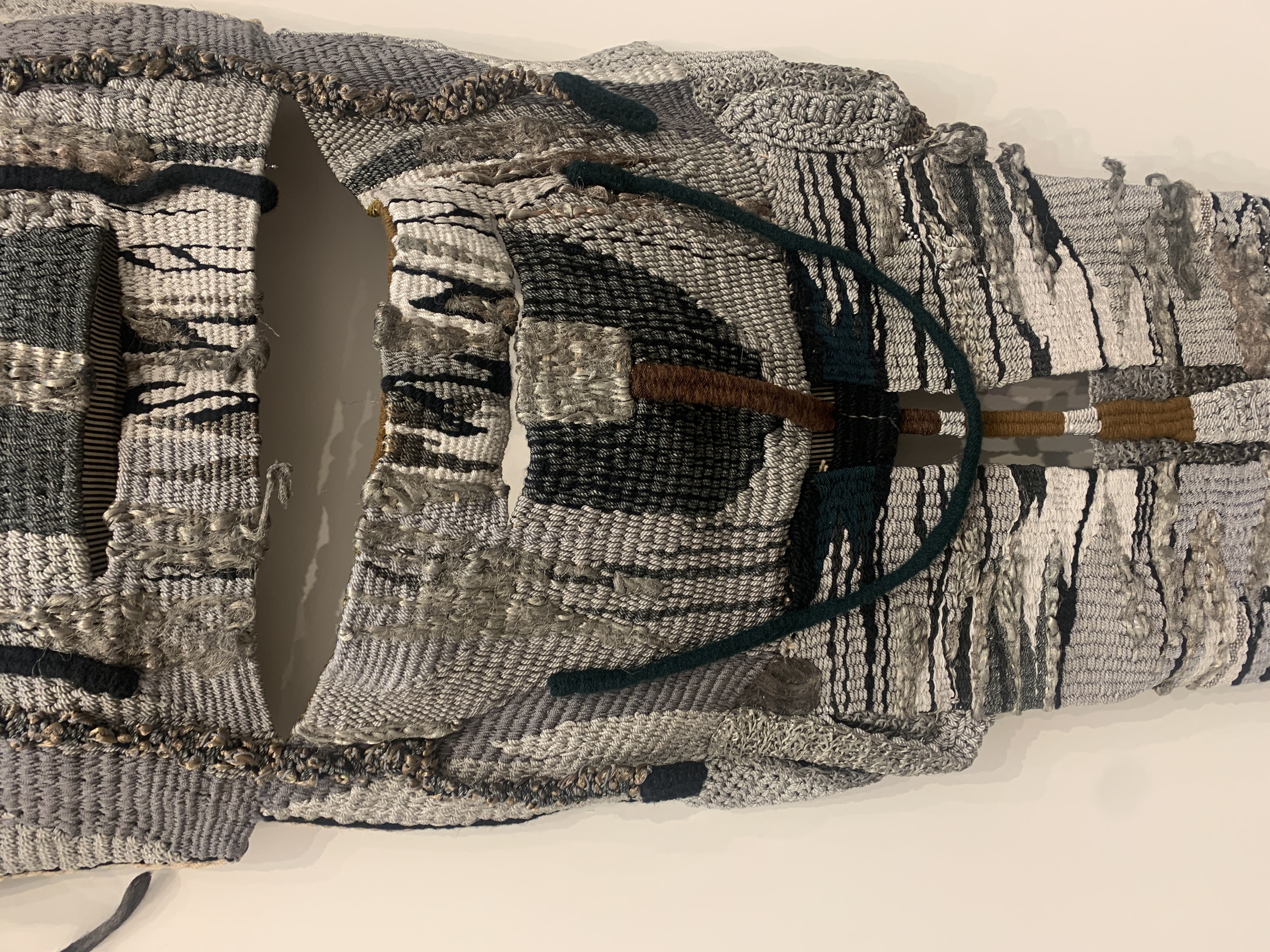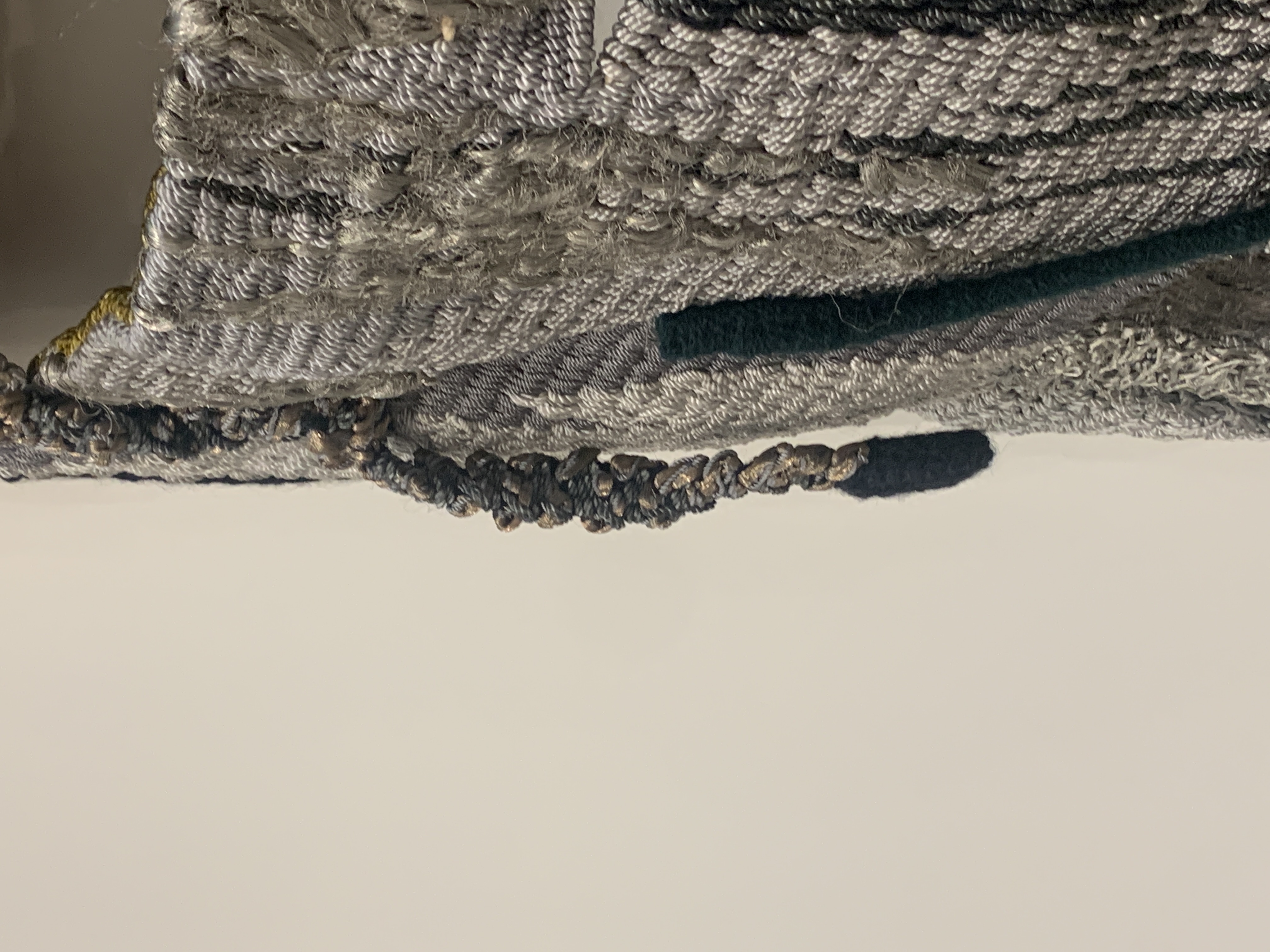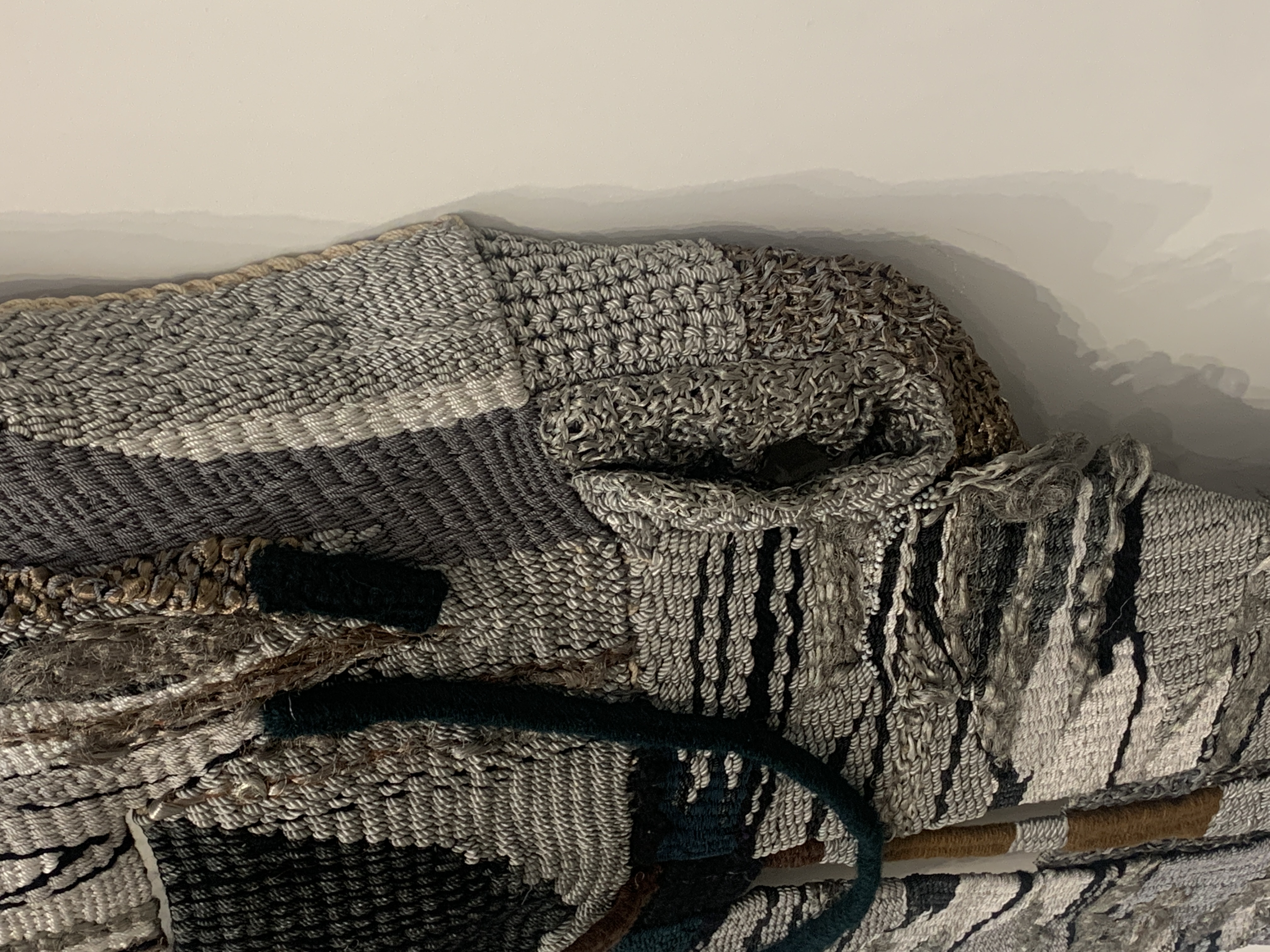Synøve Anker Aurdal - Rustning / Armor, 1973
I saw this work on a lonely silent Sunday afternoon. Being new in Oslo and wandering around in the city, but rather looking for places where I feel homely. I was reading about the exhibition from Synøve Anker Aurdal, and as I am interested into the experimental approach to working with textile I went to see the exhibition at Astrup Fearnly.
The work Rustning, so to English Armor is a protective shield that extends and protects a body.
It reminds me to days when I went with my parents to museums and learned about the medieval soldiers of the area I am from. The most formative memory is to hold the chainmail that would have covered the head of soldiers. The very heavy part of the armor, that protects the so fragile head and neck, consisting of hundreds of braided metallrings. I remember that the guide was proudly presenting this chainmail and handing it to us. I don’t really remember the weight, but the cold metal touching my hand. Imagining how cold the body must have been, when waring this armor of metal.
Staying here in the museum and looking at the work “Armor” from Synøve Anker Aurdal, which is probably consisting out of millions and millions of knots and braided loops and hoops and rings, makes me imagining to put on this armor.
What fight would I fight with it?
What protection would I need for what kind of danger?
What beautiful kind of soft shell. Some soft armor to sensor my surrounding. A textile body extension to broaden my tactilities.
Eva Kotátková - Machine for Restoring Empathy (2019)
...Tactilities... this made me think of the Work “Machine for Restoring Empathy” by Eva Kotátková that I sawin December 2021 in LWL museum in Münster. Accidentally I was matching with the colours of the installation, wearing my read trousers, which made me almost feel like a performer of the piece.
The piece is been activated by performers, reading texts, stitching and sewing their clothes, workind on the machine. How to perform emapthy? How to internalize empathy, and feel an intrisical need to act in empathy?
the space that the installation offers of course stands in contrast with the actual space surrounding it. The gallery space, being rarely a space where actually empathy can be acted. Still I remember wandering around these fragments and traces of the performance, and reading the texts; imagining the voices reading out the texts, sensing the atmosphere of the people caring for their textile, constantly working on the machine to restore empathy.
“Empathy is the ability to recognize, understand, and share the thoughts and feelings of another person, animal, or fictional character. Developing empathy is crucial for establishing relationships and behaving compassionately. It involves experiencing another person’s point of view, rather than just one’s own, and enables prosocial or helping behaviors that come from within, rather than being forced.” (https://www.psychologytoday.com/intl/basics/empathy)
where and how do we learn to be empathic? What agenda do parents, teachers, educators, rolemodels have, when we are being taught to be an empathic being? How can we actively restore our (in)abilities for empathy, but also and more in general our Habitus?
In Eva Kotátková’s work performers, children and adults, engage collectiveley with working together on the field of the installation.




![]()
![]()
![]()
![]()



